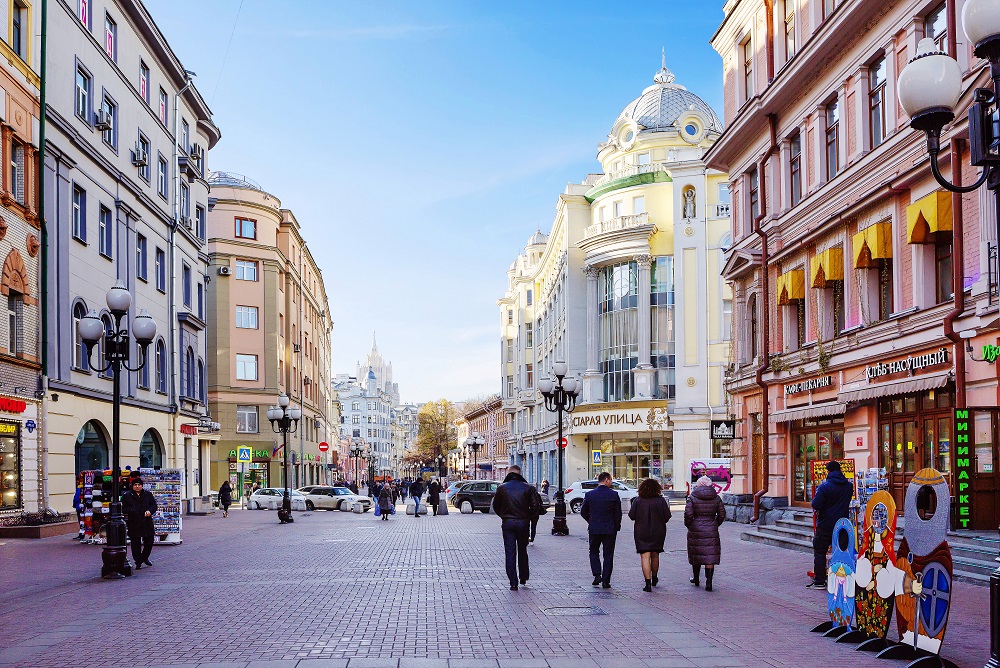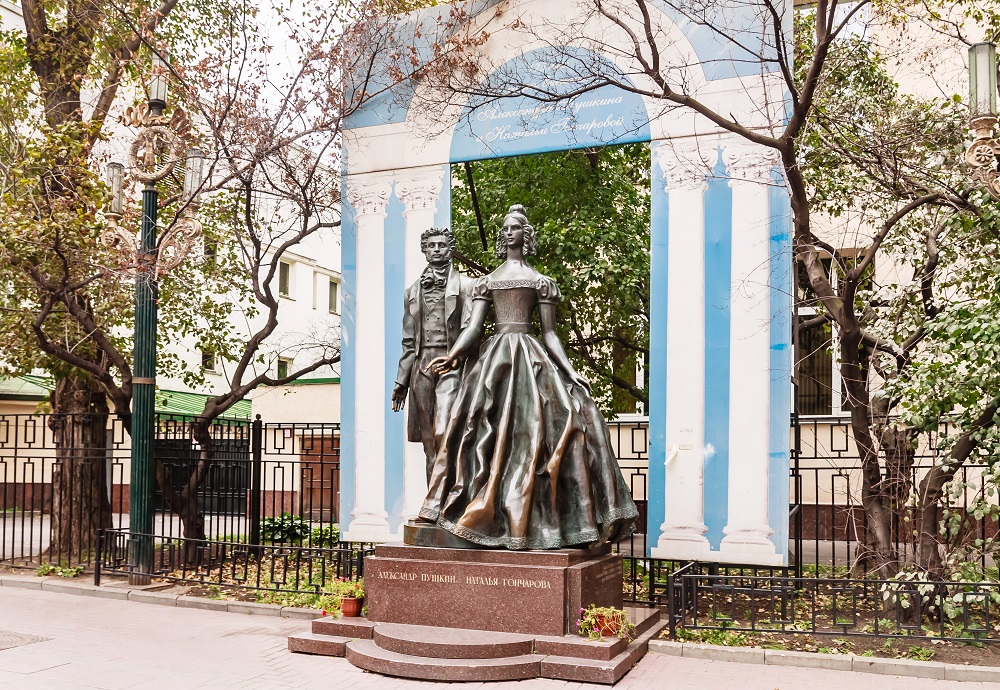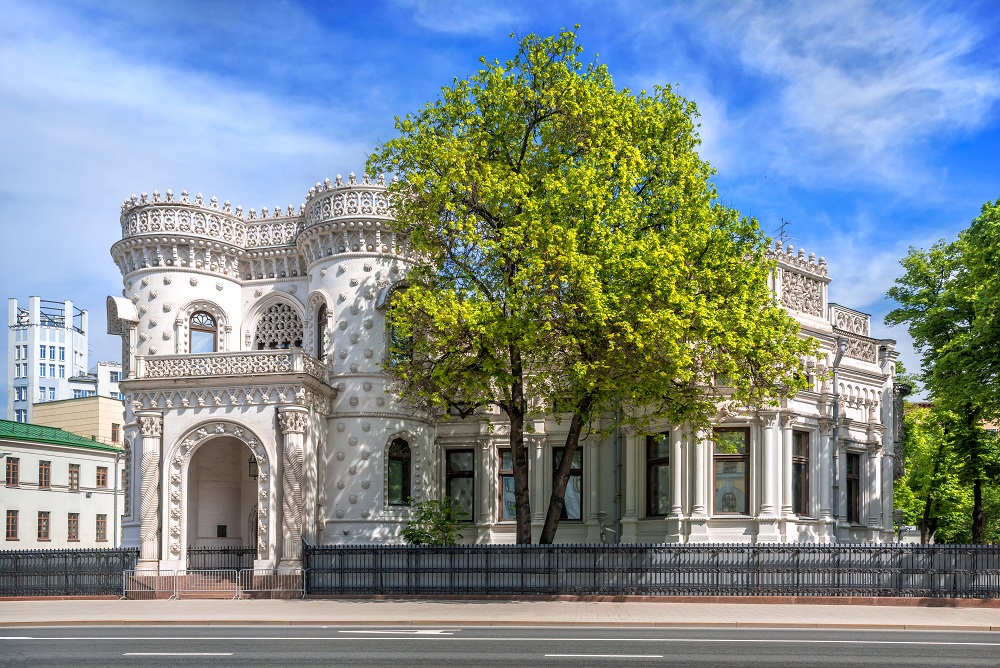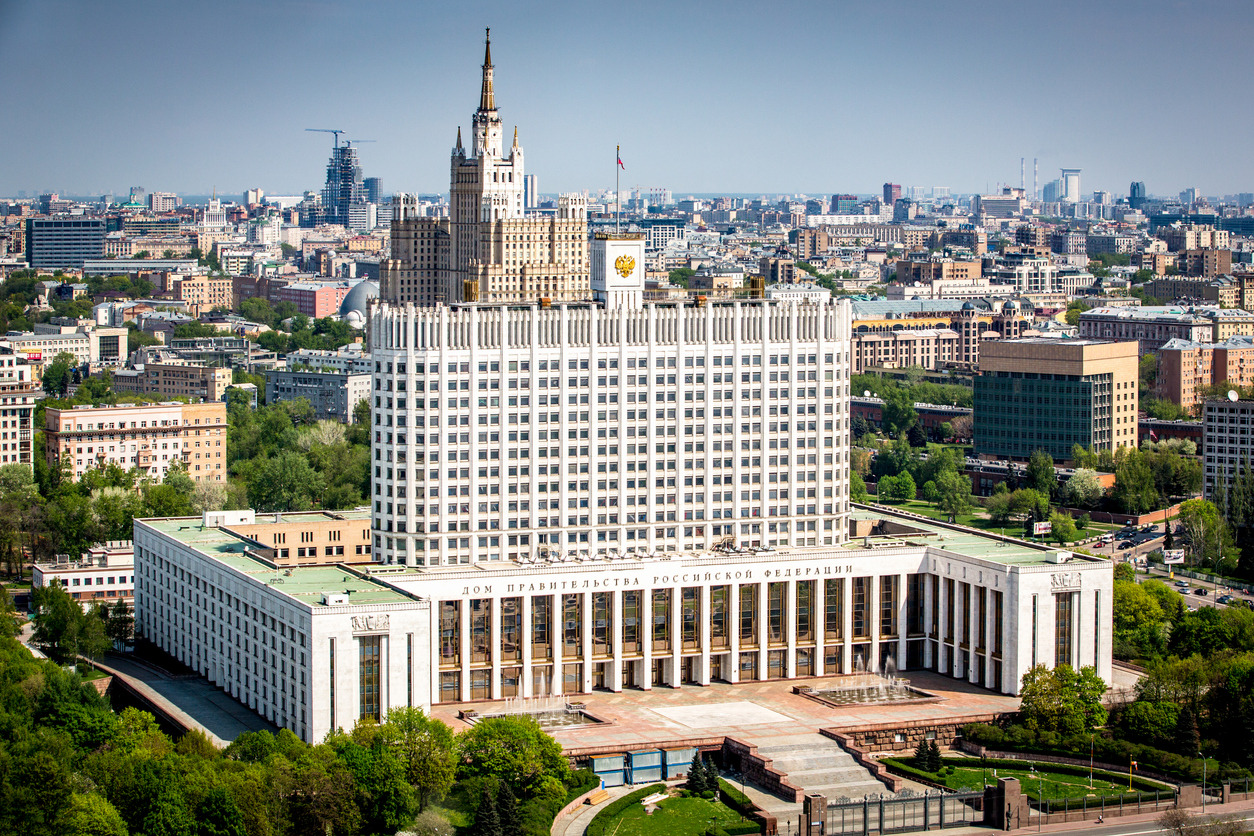XXIII Moscow
International Congress
on Endovascular Surgery
22-24 November, 2021
Lotte hotel Moscow
 TCT RUSSIA 2021 Video
TCT RUSSIA 2021 Video
Registration — closed
Participation packages
The deadline for accepting applications has been extended until October 8, 2021.
A completed application should be sent to info@tctrussia.ru
SPONSORSHIP PACKAGES
Sponsorship package
Alternate Sponsorship package
Sponsor Application Form
Alternate Sponsor Application Form
Information Sponsor Application Form
EXHIBITORS
Warning!
Culture
The magic of the Old Arbat
Even as I love forty thousand other roads.
Oh, Arbat, my Arbat, you are my homeland,
No one could ever reach the end of you.
As the Red Square is the heart of Moscow, the historic Arbat is the soul of it. No doubt, this street is most famous in the city. It’s not a regular street, but a real historical district, located between the Arbatskaya and Smolenskaya-Sennaya squares. In the chronicles, Arbat was first mentioned in 1493.
There is a series of versions of the Arbat name origin. The most popular one claims it had come with oriental merchants who used “arbad” for suburbs or outskirts as the area was in the 15th century when only the Kremlin was named a “city”.

The outskirts accommodated the settlements of riflemen and craftsmen with their apprentices. Their trades are still reflected in the names of the neighboring lanes and streets, i.e. Povarskaya, Starokonyushennyi, Skatertnyi, Krechetnikovskiy, Stolovyi, and Khlebnyi.
In the 17th century, Arbat had mostly wooden buildings. The existing stone survivors appeared there only after the fire of 1812 which destroyed most of the wooden constructions.
The second half of the 18th century saw Arbat as turning into a comfortable district of Moscow nobility leading a paced family lifestyle, “gentlefolk’s nest”. Such famous Russian families as the Tolstoys, the Golitsyns, the Trubetskiyes and the Sheremetevs saw it as a matter of honor to have their estates in Arbat and so turn it into an aristocratic domain.
The Old Arbat is one of the few places in Moscow that has retained the flea market spirit of the 1990 s, the merchants’ buildings of the 19th century as well as modern stores and restaurants. Yet, for those who make it a point to appreciate the gist of the matter, Arbat can show its absolutely different side. A lot has been written and sung about Arbat. Many famous people lived here and many great writers took a promenade here. Mikhail Bulgakov also liked to walk along Arbat. He even took Arbat scenery into his epoch-making novel The Master and Margarita.
In the middle of 19th century, the Arbat architecture began to change to take its contemporary look. Fires damaged many old houses so today the street architecture is a hotch-potch style, including Art Nouveau.
Nowadays, Arbat starts with Prague, the famous restaurant which authored the Bird’s Milk cake for the first time, still beloved by all.
Each building in Arbat, to say the least of it, bears the imprint of history and its owners. For instance, the Echkin hotel (1904). The house of the Russian Physicians’ Society used to accommodate once upon a time Denis Davydov, the hero of the war with Napoleon (1812). The most remarkable building in the Old Arbat is the so called the Knights’ House. Erected in 1914, it looked then as a real skyscraper to offer apartments for the well-off.
In front of the Knights’ House, the Princess Turandot memorial fountain commemorates the same name comedy of the Vakhtangov State Academic Theatre.
At the intersection of Arbat and Plotnikov Lane, there is a monument to Bulat Okudzhava, the great poet of Soviet time, who was born in Moscow and devoted much of his poetry to Moscow and Arbat in particular.

Arbat ends with the house of Alexander Pushkin, the great Russian poet, who is widely praised as “Pushkin is all for the Russian soul and the Sun of Russian Poetry”. The house overlooks the monument to him and his spouse Natalia Goncharova who was a beauty, a dream of many men of the time. The newlyweds had lived for some months in Arbat and then left for the then capital of St. Petersburg.
The building emerging behind the Pushkin House is one of the seven Moscow high-rises of Stalin time. It has always been the Ministry of Foreign Affairs of the Russian Federation.
Arbat is unique for both Moscow and the entire Russia. It was turned into a pedestrian street in 1986 to become synonymic of all promenades in Russian cities. When taking a walk along Arbat, you can come by a souvenir shop or a restaurant, have your portrait made by a street artist, or stop for a time to listen to musicians.
Despite the many past changes, Arbat is preserving its creative pacifying spirit, which is inherent in it and has been a magnet for all those wonderful people who lived and worked exactly here under the hospitable shade of quiet green yards and the charming Arbat lanes.
The Moscow Courtyard as the most famous painting
The nice Transfiguration of the Savior Church-on-Pesky (sands) with its conical belfry rises not far from the Old Arbat in the Spasopeskovskiy Square.
The stonework church was built in the early 18th century at the site of the wooden construction. This traditional Moscow five-domes’ temple with a conical belfry was one of the last ones completed prior to the stonework ban imposed in Russia by Peter the Great emperor who ordered all stone to be used only for the construction of St. Petersburg. The charge has remained to date as nearly intact, because Bolsheviks used it for various purposes for many years, including the Soviet animation company.
The church architecture is typical of the end of 17th century’s Moscow. The five-domes’ quadrangle (main volume) and the conical belfry are connected by the low refectory. The aisles of the temple are located asymmetrically. it is a classic example of the Moscow suburban church at the turn of 18th century.
In 1849, the church was enclosed in walls, with the decorative gates added in 1891 to remain to date as a grand entrance.

In 1932, the church was closed and was empty until 1956 when it was converted into an animation studio. It was returned to the Russian Orthodox Church in 1991 and restored to get back to its original purpose.
The Transfiguration of the Savior-on-Sands Сhurch has always impressed its contemporaries. In 1878, Vassiliy Polenov, the prominent Russian artist who lived nearby, captured it on his famous painting The Moscow Courtyard, which features the old Moscow idyll where the harmonious architectural beauty of churches neighbors the patriarchal lifestyle. The painting that has preserved the bygone city image is a symbol of the simplicity and piety of Moscow life of the time. Currently, The Moscow Courtyard is part of the Tretyakov Gallery collection as one of the best-known paintings by Vassiliy Polenov.
The Transfiguration of the Savior-on-Sands Church is a flash object of Moscow architecture and the federal cultural heritage protected by the state.
The story of a mansion
There is a fancy Morosov’s mansion at the heart of Moscow near the Arbatskaya metro station. The building, combining Art Nouveau and eclectics, is a unique example of the Moscow architecture styled in a neo-Moorish spirit.

The mansion was constructed in 1895-1899 by Viktor Mazyrin who was commissioned by Arseniy Morozov, a rich merchant being, the nephew of Savva Morozov, the famous philanthropist. In the early 1890s, during his voyage in Spain and Portugal, Morozov was impressed by the beauty of the Pena Palace in Sintra, built in the 19th century to combine the Spanish-Moorish medieval architecture and the national Manueline style. Then, he ordered to erect something similar on the land plot in Moscow given to him as a gift for his 25th birthday.
The Morosov’s building architecture intertwines Art Nouveau, neo-Gothic, Empire and neo Moorish styles. The lavishly decorated front comprises cylindrical turrents with a lacy-latticework rooftop railing and a portico being in a lucky contrast with a simpler and stricter look of the rest of the building. The doorway is ornamented with the ship ropes tied up into sailor’s knots. The turret walls carry scallop shells while the entrance is rimmed with twisted chains. Charm is lent to the building by geometrical figures, traditional rosaces, flowers, bunches of grapes and stuccowork over the walls. The general asymmetric design of the mansion is more typical of Art Nouveau. The styles abound even more inside the building. The “knight’s” great hall, the Empire dining-room, and the Baroque, Arabic and Chinese rooms.
As early as during the construction of it, the building became the focus of mockery, gossip, rumour and critique in the press. Public opinion looked at the exotic mansion with disapproval as being extremely eccentric. The Muscovites were able to see the true value of it only by the early 2000s.
During the Bolshevik revolution, the building was the anarchist party headquarters. In 1918 - 1928, the mansion was used by the first workers’ theater. During this period, it was continually visited by such outstanding figures of culture, writers and poets as Vsevolod Meyerhold, Vladimir Mayakovsky, Sergei Eisenstein and Sergei Yesenin. After the men of theatre had gone, the mansion on the Vozdvizhenka St. moved to the People’s Commissariat of Foreign Affairs. It was followed later alternatively by the embassies of Japan, India and the British Ally’s editorial office. In 1959, the building became home to the House of Peoples’ Friendship to host conferences, meetings with foreign figures of culture, and film shows.
Nowadays, the Morozov’s mansion is used for meetings with foreign government delegations, diplomatic negotiations and international conferences. It also accommodates the Reception House of the Russian government.
Arbat neighborhood
Side by side with the Novoarbatsky bridge, there is the grandiose whitewashed House of the Government of the Russian Federation, which overlooks the Krasnopresnenskaya Embankment of the Moskva River.

The massive building was erected in 1965-1981 based on the design of Dmitry Chechulin and Pavel Shteller to be named originally as The House of Soviets (local councils) of the Russian Federation. During the construction, Dmitry Chechulin used elements of his unrealized 1934 design of the Aeroflot airlines headquarters. He is known as the pioneer of high-rise construction in Russia who authored two “Stalin Empire” skyscrapers (Kotelnicheskaya Embankment; Beijing Hotel) and the Rossiya Hotel in the Zaryadye Park near the Red Square.
The granite-clad foundation carries a seven-floor building with the outhouses and a 20-floor tower with rounded angles, which is crowned with a small clock tower, carrying a gilded coat of arms of Russia and a flagpole with the national colors. Until 1993, there had been a clock instead of the current coat of arms. The building height together with the flagpole totals 119 m (102 m without the latter). The outer cladding of the building is white marble, with the walls being decorated with bas-reliefs. The interiors are varicolored marble and ornamental stone. The main stairs with ramps leads from the grand entrance to the embankment.
In 1981 – 1993, the building accommodated the Supreme Soviet (parliament) of the Russian Federation to be replaced in 1994 by the Government of the Russian Federation. The Government House offers offices to the cabinet members as well as 27 rooms for events and receptions.
The snow-white building on the Moskva River bank blends perfectly with the Moscow downtown architecture.
The Arbat St. still remains a favored place for those who lived, live and come here for a walk along the old lanes. Although the look of it has changed, it still preserves the ancient and beautiful spirit of Moscow. The eyes of artists, poets and writers will never leave out of sight this remarkable street, while ever more generations of Muscovites will take a promenade there to breathe in the enchanting name of Arbat.
Program
Main course program 1st Day: «Transcatheter treatment of cardiac failure, aortic aneurysm and persistent IHD»
Main course program (PDF)
Main course program 2nd Day: «Transcatheter treatment of acute coronary syndrome and ischemic stroke; TAVI»
Main course program (PDF)
Main course program 3rd Day: «PCI on complex coronary and peripheral arteries; TMVI»
Main course program (PDF)
Elective events
Nurse and technologist symposium
СЕРТИФИКАТ О ПРОХОЖДЕНИИ ПРОГРАММ(-Ы) И КРЕДИТЫ НМО
Все учебные Программы Конгресса заявлены на аккредитацию в системе непрерывного медицинского образования (НМО).
Контроль присутствия оффлайн участников:
Предварительная онлайн регистрация, подтверждение регистрации на стойке перед началом образовательного мероприятия, контроль персонифицированных бейджей на входе/выходе из зала.
Контроль присутствия онлайн участников:
Минимальный порог времени участия в каждой Программе конгресса 270 мин.
Прохождение контроля присутствия участников методом закрытия всплывающих окон.
Успешным подтверждением участия считается закрытие 6 (шести) из 7 (семи) всплывающих окон контроля присутствия.
Warning!
Viewing the broadcast is available for registered participants of the conference after you sign in
Mobile Application
Description
The application includes:
- The program activities
- The list of speakers and their individual schedules
- The Add-to-favorites button
- The interface in Russian and English
- Contacts, Sponsors, Congress information
- Announcements, votes, questions, raitings for lectures
The application will be useful to all congress participants
(To download the app, enter TCT RUSSIA in the search field of the app store for your device, or use the links below)







